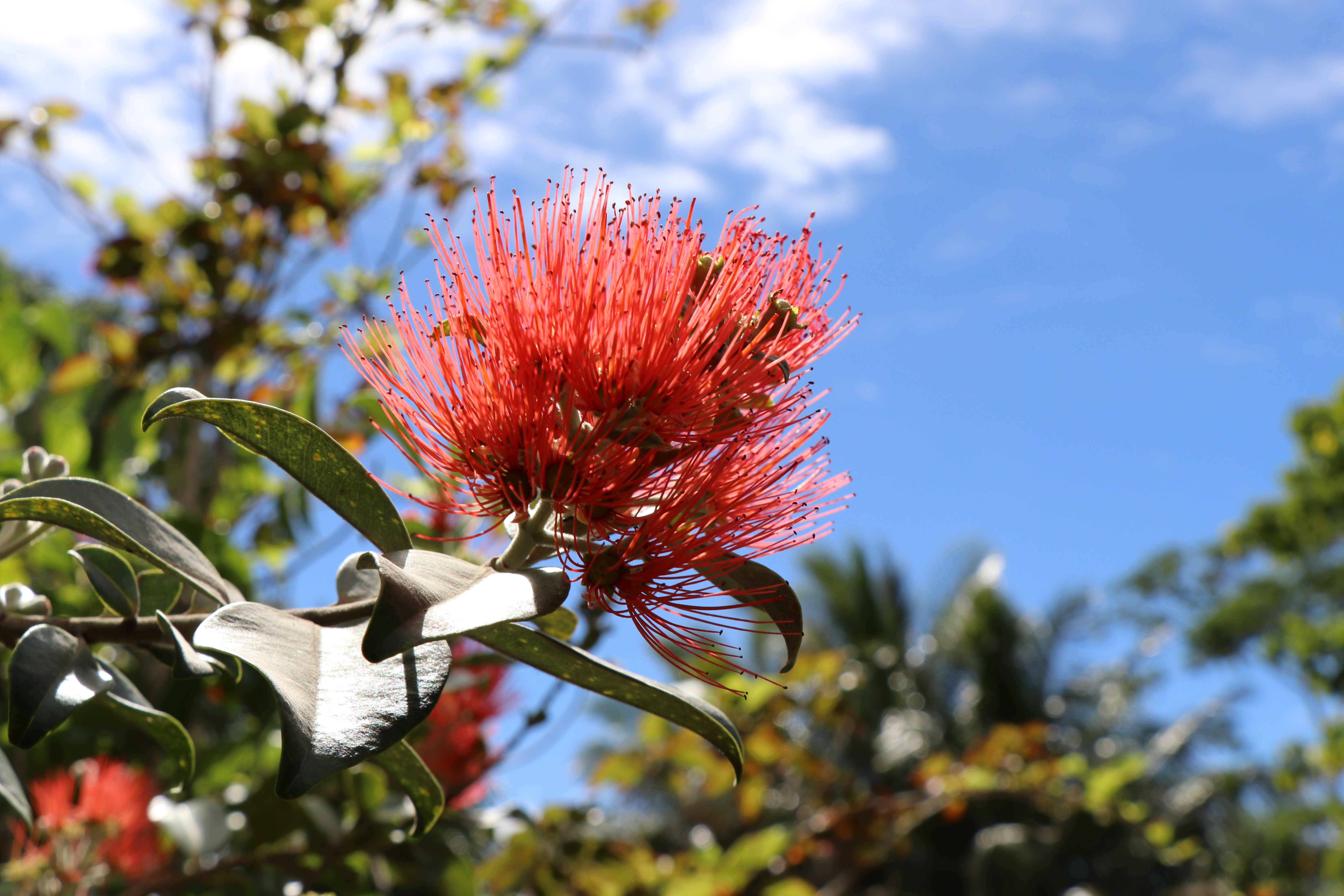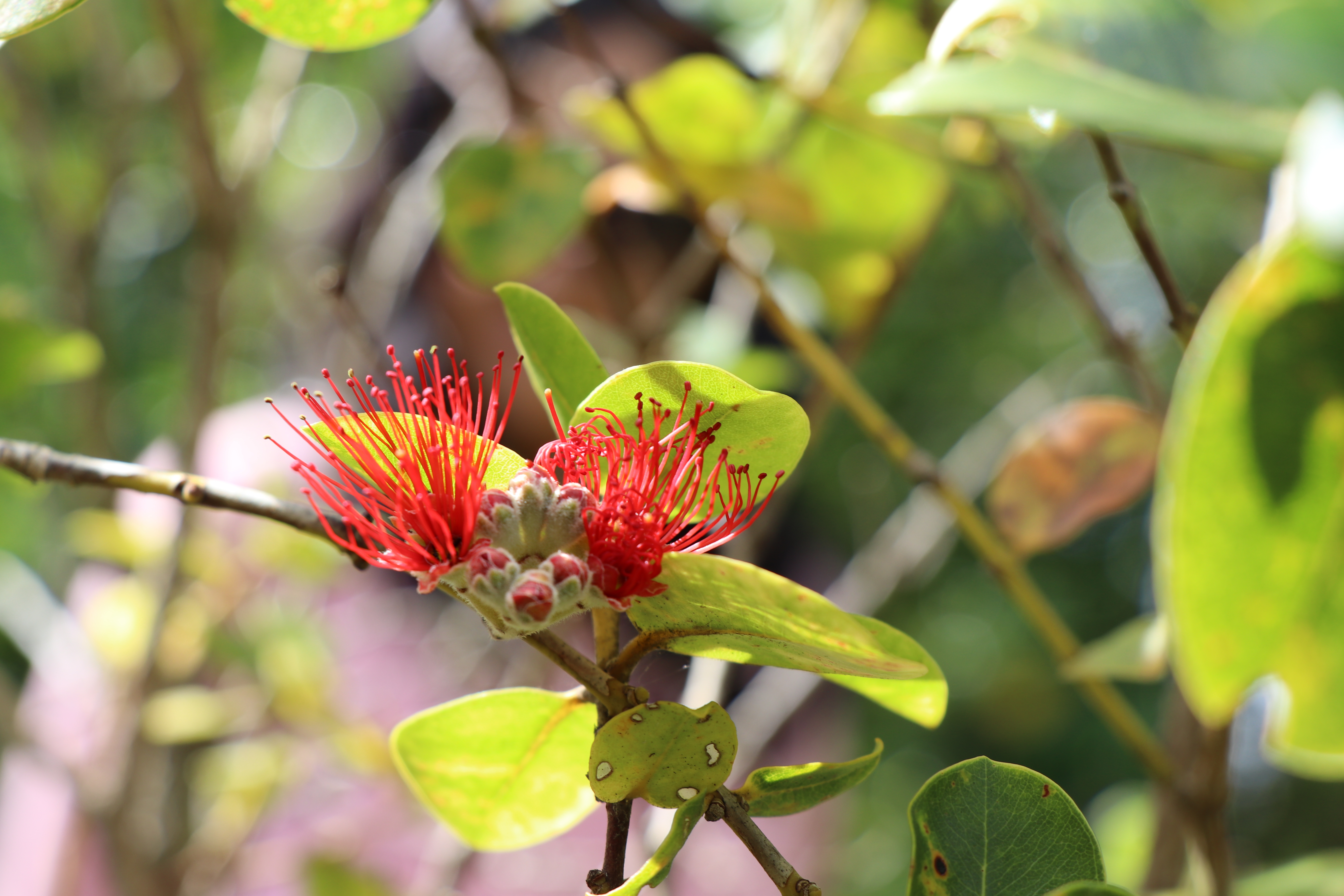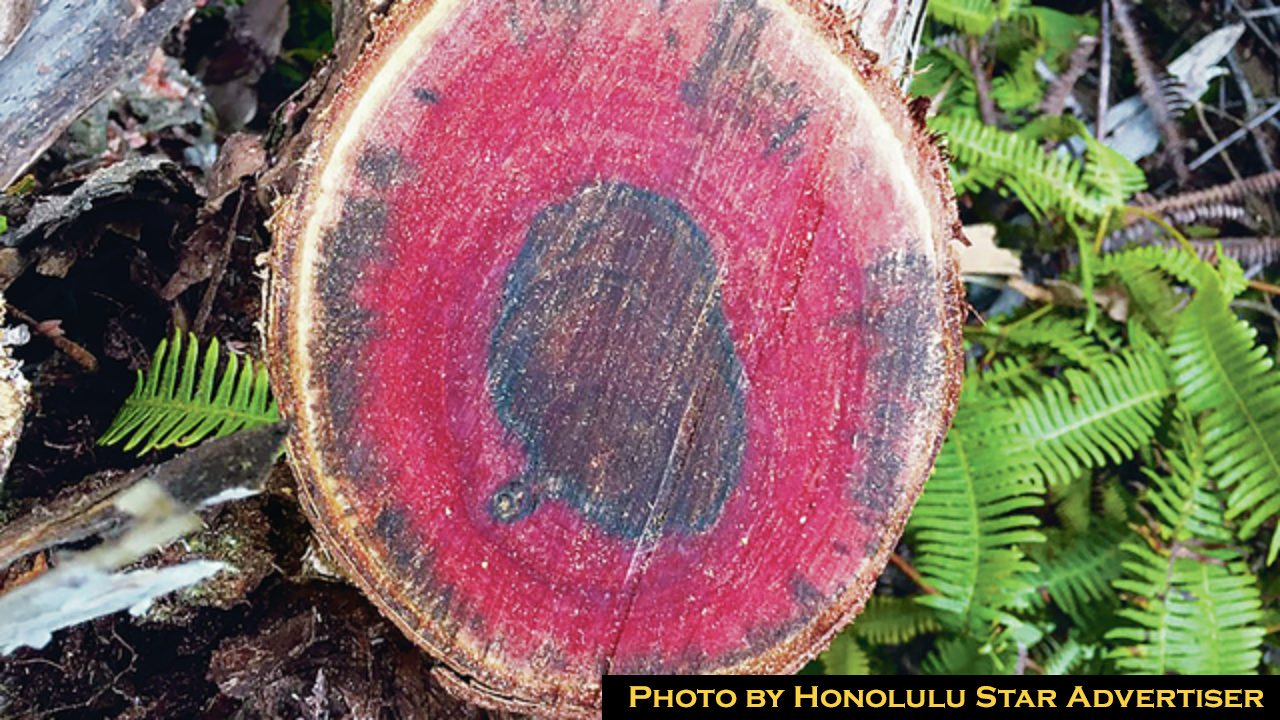Rapid ʻŌhiʻa Death
Article by Tori Kobayashi
Hahai no ka ua, i ka ulula’au
“The rain follows the forest”

Located 2,500 miles away from the nearest continent, Hawai’i’s geographic isolation has created the optimal environment for evolutionary phenomena, adaptive radiation, thriving microclimates. This allows for a diverse array of flora and fauna to coexist in healthy, functioning ecosystems.
The ‘ōhi’a lehua (Metrosideros polymorpha) is an endemic hardwood plant that holds both environmental and cultural significance to the Hawaiian archipelago. These trees are considered a keystone species; an organism that is essential to the healthy function of an ecosystem. The ‘ōhi’a accounts for approximately 80% of all forests statewide, making it the most abundant native tree in Hawai’i. 'Ōhi’a trees are responsible for replenishing environmental aquifers which provide clean water for the island’s agricultural sector. Their tree trunks also supply water and nutrients to surrounding seedlings, epiphytes, and various native/endangered birds and snails.
I mohala no ka lehua I ke ke’eke’ehi ‘ia e ka ua
“Lehua blossoms unfold because the rain treads upon them”
It is the rain that brings forth ‘ohi’a blossoms and so do gentle words bring forth much that is desired.
In Hawaiian culture, a person’s relationship to the land is integral to their identity and overall sense of wellbeing. When one speaks of another who is beloved, skilled, and resilient, they are often referred to as the ‘ōhi’a lehua. This is due to it being one of the first native plants to colonize barren lava substrates after a volcanic eruption. The ‘ōhi’a also bears pertinence to Hawaiian mythology through its association with Pele, the goddess of fire, Hiʻiaka, Pele’s younger sister, and Laka, the goddess of hula. This native species also played a significant role in lā’au lapa’au where its leaves and flowers were utilized in the preparation of traditional Hawaiian medicines. The rest of the tree was used as framework for canoes, houses, weaponry, and other types of tools.

In 2009 to 2010, Puna residents on Hawai’i Island began reporting sudden mortality of ‘ōhi’a trees on their properties and in other nearby forests. In 2012, more than 10% of ‘ōhi’a trees within 1600 hectares had died. By 2014, the mortality rate had increased to 6400 hectares which then raised more concern. UH-CTAHR had isolated a fungus obtained from ‘ōhi’a wood samples and identified the pathogen as being related to the disease Ceratocystis fimbriata, now referred to as Rapid ‘Ōhi’a Death (ROD).
This pathogen is known to induce vascular wilt and canker diseases in various hosts. It was hypothesized that the disease was being spread through anthropogenic activity, transmission from animals, and insect vectors. Since then, two new species of genus Ceratocystis, C. lukuohia and C. huliohia, were identified in 2017 to 2018. Symptoms of ROD are sudden discoloration (yellowing) of the tree crowns and branches. Browning and death typically occur within two to three weeks after the first sign of symptoms. Ceratocystis can be identified as a dark, radial staining in the sapwood along the outer margins of infected trees. Freshly cut wood may give off a fruity odor as well. Due to ROD being a new plant disease discovery, there is currently no definitive treatment for it. Many organizations and programs are implementing simple yet effective procedures in efforts to prevent more epidemics. Procedures include decontaminating shoes, clothing, and tools with a solution of 70% isopropyl alcohol, pressure washing vehicle tires and undercarriages with detergents after off-roading and avoiding the transportation of ‘ōhi’a wood.

Hawai’i’s benign environment and high rate of endemism make their native and endangered species susceptible to imbalances and extinction within their ecosystems. The survival of each species is dependent on an array of other species. Therefore, if one is lost the symbiotic but fragile structure of ecology in Hawai’i would be disrupted. These concepts align with Grove Farm Company’s initiatives and their commitment toward building a sustainable Kaua’i.
In late 2021, Grove Farm decided to install four ROD boot brush stations at Kapaia Watershed Preserve, Kōloa ATV and Zipline, Kaua’i Backcountry Adventure, and Makauwahi Cave Reserve. With immense help from Kaua’i Invasive Species Committee, Grove Farm received approval, guidance, and ROD signs from Kim Rogers, the KISC ROD outreach specialist. The first station was installed at Kapaia Watershed Preserve, followed by Kaua’i Backcountry Adventure, and Kōloa ATV and Zipline. Grove Farm is currently setting up a date for the final boot brush station to be installed at Makauwahi Cave Reserve. These stations are designed for both staff and visitors to decontaminate their shoes before walking in areas with 'ōhi’a and other native species.

The vitality of the ‘ōhi’a lehua has been made abundantly clear through generations of cultural integration and environmental significance. While widespread mortality has been detrimental to forests in Hawai’i within the last decade, the most recent epidemic has exhibited a higher, more rapid mortality rate. It is essential now more than ever that action should be taken in order to preserve natural biota that can only be found within the Hawaiian archipelago.
